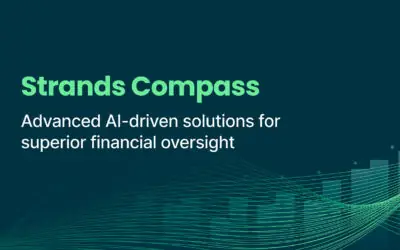Opportunities to achieve global financial empowerment have never been greater and the line between FinTech companies and Big Tech platforms has never been less clear. The new benchmark in economic and digital performance, leveraging on the network effect, digital customer acquisition across channels, cross-sell and upsell strategies tied to behavioral models, are inexorably led by FinTechs, Challenger Banks, and Big Tech players who have changed the rules of the (banking) game. For the first time in history, delivery mechanisms for financial services are decoupled from incumbent banks. That creates a revolutionary moment for FinTechs and online platforms.
Big Tech companies, like Amazon or Apple, have unprecedented visibility into their user’s financial behaviors and gaps. Consider Apple’s secured credit card for customers with poor or limited credit histories. This card, which is issued by a partner bank, offers from 1% to 3% cash-back for purchases and interest-free installments. Customers have the chance to improve their credit and eventually qualify for more products while earning cash-back perks and using a PFM-integrated digital wallet on their iPhone.
These giants can now access a formerly untapped market segment, and it deepens customer relationships with these companies. They have also built trust with their user base and know what types of messaging to use. By combining this knowledge with strategic tech developments such as Alexa o Siri, these platforms can create personalized banking experiences, driving growth in profitability, and financial empowerment.
Approaches To Compete With Challenger Business Models Stock valuation for these Big Tech companies seems to never hit peak, while valuations for many banks have been decreasing since the 2008 crisis, without signs of recovery. This reflects market concerns about banks’ health and profitability as well as the need for shifts in business models. Incumbent banks valuation now is measure of certain factors, such as:
- How fast they can divest themselves from their legacy branch networks
- How they reduce costs
- How they develop their speed of acquisition and what percentage of their acquisition is 100 percent digital
- How they embrace and use of AI for data monetization
Thus, the pressure will be on these retail banks to look more and more like a challenger bank. Banks used to own all the customers, but digital banks now own millions of customers too. For instance, return on equity for larger challenger banks is more than 2 times higher than larger traditional banks. Key factors for this are lower legacy IT costs and a simplified product portfolio, providing a cost-to-income ratio just below 50 percent for the challengers, compared to 80 percent cost-to-income ratio for incumbents. And, although incumbent banks still have the widest range of services, new digital banks have their own customer hooks.
Digital banks are still focused on customers not revenue, so pricing can be very aggressive, which makes them such formidable competitors.
When comparing traditional and challenging digital acquisition strategies, branches are simply too expensive and slow for scale. In the timeframe and with the resources they spend, most challenger banks have up to 18 months to prove their case and hence, raise more capital to continue to grow. Every challenger and FinTech companies are trying to compete in real time for customers, thus they eliminate the need for real signatures or face-to-face interaction when onboarding new customers. The reason is because this slows down revenue and growth, with in-branch customer acquisition cost (CAC) being five-to-ten-times that of using digital channels.
A common practice in the banking industry is to look at what alternative banks are doing and analyze what they might launch next. However, the real opportunity to achieve financial empowerment lies with the companies that are most connected to people’s lives. This is why natural partnerships are emerging among consumer-facing marketplaces, banks, and back-end FinTechs to drive greater value for them and their customers.
FinTechs have successfully redefined what the customer demands from a bank, and they have set the bar for UX and UI in comparison to incumbent banks. In the end, banks will have few choices in how to respond to the structural changes financial services are witnessing as a result of the explosion in FinTech-led innovation.
Unlike Big Techs and challengers, most FinTechs are not the enemy of incumbent financial institutions. On the contrary, FinTech companies have become facilitators, working as tech partners, not challengers. Both banks and FinTechs are committed to delivering the best banking experience to the consumer, but those partnerships can build an even better experience by collaborating rather than operating alone.
Here are the top 6 reasons why banks should partner with FinTech firms:
1. Opportunity cost
Banks spend valuable time trying to justify internally whether to buy or to build technology and, needless to say, this will become harder and harder to justify over the coming years. There are a number of banks that spend years brainstorming ideas about FinTechs and technology, without delivering results for the end customer. In the time these incumbents spent trying to learn as much as they can about technology, they could have implemented the technology much faster and been more cost-effective by collaborating with a FinTech partner. Also, licensing technology rather than building it internally gives the bank more flexibility, and the ability to reject a path if proved wrong.
2. Technology gap
There are going to be technology gaps in most cases, this is why banks collaborate with FinTechs in the first place. FinTech firms have the advantage of being free of legacy technology systems and regulations, which are the main limits for new digital developments of traditional financial institutions. As a result, FinTech companies can create customer-focused services or products more efficiently, and that threatens banks’ status quo. Also, FinTechs have more up-to-date technology knowledge about the core components they are using in their solutions. In the end, banks and FinTechs must make sure that there are clear expectations about how the technology gaps will be filled. As such, banks may be required to build an API, or a FinTech partner may have to modify or extend its stack to integrate with a bank existing architecture.
3. Risk-averse culture
A FinTech firm moves fast, does not worry too much about regulation, and has a culture of risk acceptance that might make most Chief Risk Officers feel uneasy. Banks need to be careful that their legal, risk, and compliance teams do not kill off the advantages and enthusiasm of a FinTech partnership. They should seek to learn from the culture of FinTechs they work with and get all the necessary support from key internal stakeholders to give the partnership plenty of latitude when it comes to solution architecture, integration, and
delivery.
4. Procurement workload
Bank procurement departments tend to favor contracts that have previously been drawn up or approved internally in the bank so that new scopes or technology will need much shorter approval times for partners than for new contracts. Also, in most cases when a FinTech comes to a bank with its technology stack, it will likely be in the cloud. What that means is that cybersecurity, uptime performance, data storage, and residency, will all be the domain of the partner. By reaching a master agreement, an IT contract with proper service level agreements with technology partners, procurement workload for adding new scopes, or technologies, can be reduced to work orders and technical reviews only.
5. Long-term focus
For banks, ROI (Return on Investment) horizons for technology projects tend to be fairly short, being 18-24 months payback the most common scenario. This short horizon, in most cases, is a source of contention when adopting new partner technologies. Short-term ROI focus to underwrite an internal business case could derail collaborations before they even start. This does not mean that banks have to write off investments in new technologies, however, ROI needs to be measured by different key metrics that are softer than other typical IT projects. These metrics might include brand equity from association with the FinTech, acquisition of new skills on an emerging platform, out-of-the-box thinking capabilities, or the ability to experiment with new technology to establish feasibility.
6. Flexible regulation
Partnering with FinTech companies that offer cloud-based AI service, allows banks to do contextual recommendations and cross-sell offers via mobile, with real-time integrations. Yet, how does this company meet regulatory requirements for each country where its potential customers operate? Depending on which country the bank is in, and which regulator it is licensed by, there may be a breach with current regulations. For instance, the partner may not be able to deploy in the cloud, data residency might be an issue, or the regulator may still require real signatures from customers accepting products from the bank. However, regulatory compliance should not be a deal-breaker as it used to be for banks. Currently, more and more FinTech companies are working with central banks and regulators to prototype new technological approaches that work around current regulations, setting up regulatory sandboxes to test their new offerings.



